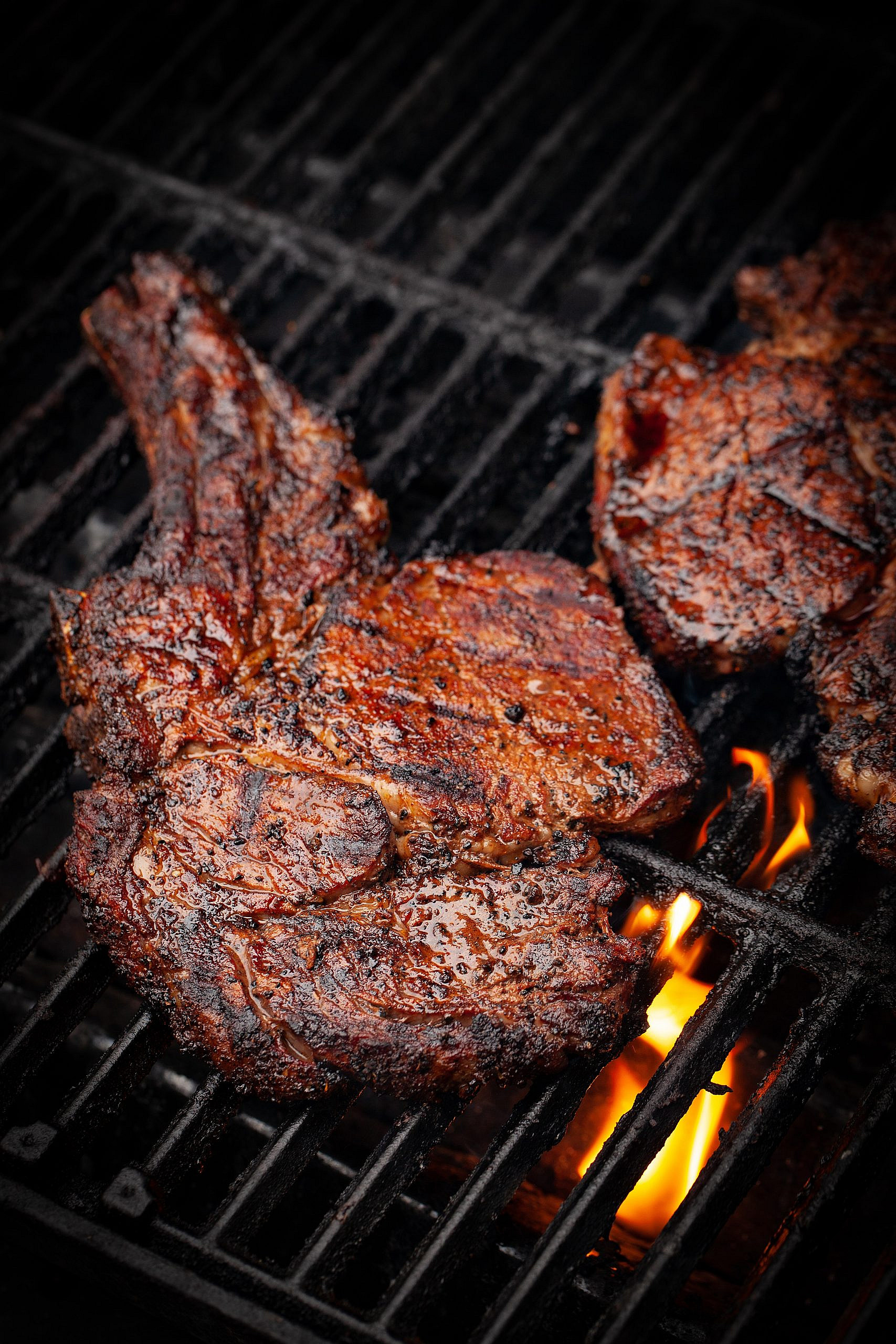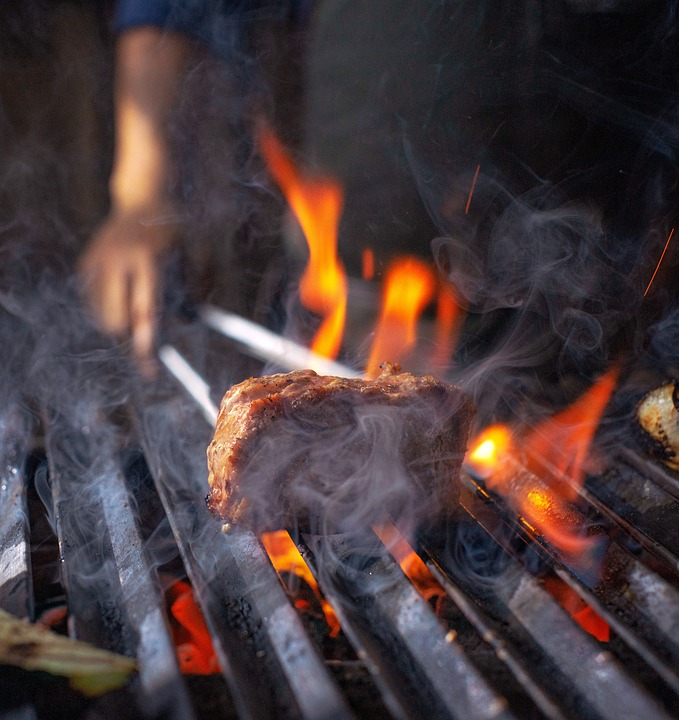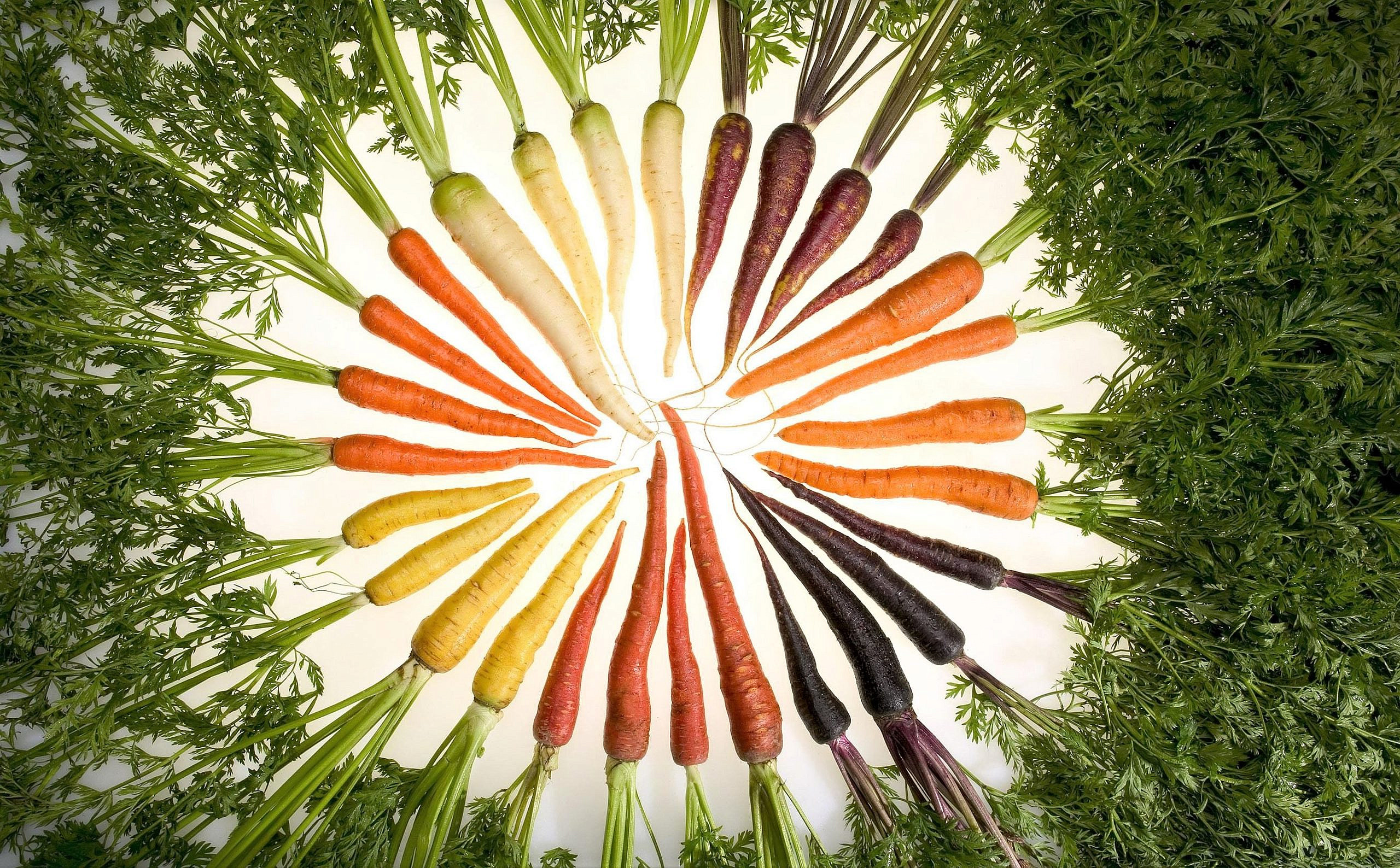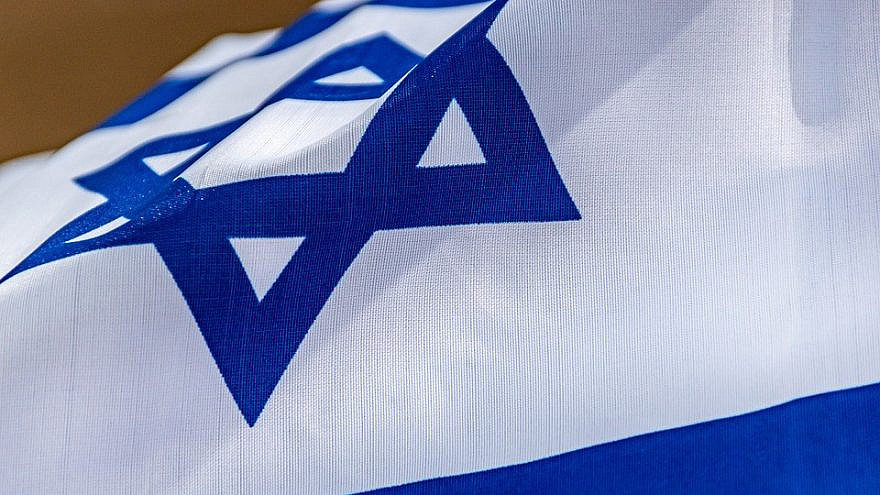While platters of falafel, pita and Israeli salad adorn many a table on Yom Ha’atzmaut (Israel’s Independence Day) in homes, synagogues and Jewish schools—a nod to Israel’s well-known cultural foods—the celebration of Israel’s hard-won independence certainly looks and tastes strikingly different when observed in Israel. For Americans, building Jewish pride via iconic national foods or cutesy blue-and-white cupcakes may seem like the perfect vehicle so far away and removed from life in Israel. But in Israel, that’s not how it’s done. Much like Lag B’Omer and the Fourth of July, Israelis stoke their mangal (outdoor portable grill) and grill, enjoying the freedom of being outdoors in a land that was fought for and acquired through personal sacrifice.
Since 1948, each successive decade brought another wave of immigration to the small country, widening the ever-rich cultural melting pot of foods that are now considered “Israeli.” The modern Israeli table is an impressive mix of Middle Eastern cuisines like Yemenite, Moroccan, Tunisian, Persian, Turkish and Iraqi, along with French, Russian and American dishes—quite different than the early years that defined the country. “Israeli food” is ever-changing and evolving.
Similarly, the existence and celebration of Israeli statehood does not remain a static historic event only to be remembered; rather, with each war and act of terrorism that occurs, it is a living reality to be appreciated, upheld and protected. The struggle to maintain Israel’s safety is a part of daily life there, as is an appreciation of those who work to ensure it. The Pinah Chamah, literally “warm corner,” a hub for Israeli soldiers, is an everyday example I discuss in my new cookbook, The Giving Table. No bigger than a room or apartment, these small citizen-run centers have opened throughout the country serving as their home-away-from-home havens—a place where soldiers can find the respite of a home-baked cookie or an ice-pop on a hot day. Volunteers contribute their baked goods, and donations come from far and near to keep these kitchens stocked. The Pinah Chamah is a kind and nourishing way for citizens to connect and give back to those protecting them on a daily basis.
I favor celebrating with the open grill and the kinds of Middle Eastern and Mediterranean flavors that will transport me to Israel in spirit even if I cannot be there in body. Some fresh laffa or pita and typical Israeli salads are a great place to start. Serve simple ones like a Roasted Beet Salad—all the beets need are a little salt and pepper, fresh lemon juice and a drizzle of olive oil and honey. Throw in some chopped parsley or cilantro for fresh vibrancy. Rainbow Carrots With Charred Dates and Tahini are a perfect match for special grilled items like Espresso-Rubbed Rib Steaks. Consider ending with grilled pineapple or watermelon served with Israeli flag toothpicks.
Note: May 14 is also Mother’s Day in the United States, and the recipes below work well for a picnic.

Espresso-Rubbed Rib Steaks (Meat)
Serves 4
I love this coffee-based rub on just about any meat. I make a big batch to have on hand so that it’s ready to go!
Cook’s Tips:
*Spice mixture can be prepared up to a week ahead, stored in a tightly covered container.
*Steaks benefit from at least one hour of marinating in the rub.
Ingredients:
3 tablespoons finely ground espresso
1 tablespoon dark brown sugar
1 tablespoon chili powder
2 teaspoons paprika
2 teaspoons dry mustard
½ tablespoon kosher salt
1 teaspoon ground black pepper
1 teaspoon dried oregano
1 teaspoon ground ginger
¼ teaspoon cayenne pepper
¼ teaspoon cinnamon
4 rib steaks, approximately 1-inch thick
oil to grease the grill
Directions:
Combine all spices in a small bowl.
Rub both sides of each rib steak with 1 to 2 tablespoons of the spice mixture (you will have leftover rub). Cover with plastic wrap and refrigerate for 1 hour.
Preheat the grill on high heat (at least 400 degrees). Carefully oil the grill grates (tongs and oil-soaked paper towels do a good job of this).
Place the rib steaks on the grill, cover and grill for about 4 to 5 minutes per side, turning the steaks once during grilling, for medium-rare doneness (longer for medium or well-done).
Allow 5 minutes of resting time before serving.

Standing Rib Roast (Bone-In) Variation:
Preheat oven 500 degrees.
Place roast fat-side up on a rack placed in a large roasting pan. Rub liberally all over with the spice mixture.
Roast for 20 to 25 minutes, until the exterior of the roast is browned (may look charred). Reduce temperature to 350 degrees.
Continue to roast until a thermometer inserted straight down into the top center reaches 135 degrees for medium-rare (about 1½ hours), and 145 degrees to 150 degrees for medium doneness.
Transfer roast to a platter; cover loosely.

Rainbow Carrots With Charred Dates and Tahini (Pareve)
Serves 4
This dish can be made with regular carrots as well, but the vibrant colors of rainbow carrots make this dish beautiful to the eye!
Ingredients:
2 Tablespoons olive oil
2½ pounds rainbow carrots (about 10 to 15 carrots), peeled and sliced on the bias, ⅛-inch thick
1½ teaspoons kosher salt
2 teaspoons coriander
½ teaspoon cumin
¼ teaspoon crushed red-pepper flakes
Zest and juice of 1 orange
8 to 10 Medjool dates, pits removed and quartered
2 tablespoons chopped mint tahini, for drizzling
Directions:
Heat the oil in a large skillet over medium-high heat.
Add carrots and season with salt, coriander, cumin and crushed red-pepper flakes. Sauté, stirring often, for about 10 to 12 minutes, or until the carrots are crisp-tender and slightly browned with color.
Squeeze the juice of one orange over the carrots and stir to incorporate.
Transfer the carrots to a serving bowl and return the empty pan to heat.
Add dates to the pan, cut-sides down. Cook for 2 to 3 minutes, until edges get charred and caramelized. Transfer dates to the bowl with carrots.
Add mint and orange zest to the carrots; toss to blend.
Drizzle with tahini and serve.
Naomi Ross is a cooking instructor and food writer based in Woodmere, N.Y. She teaches classes throughout the country and writes articles connecting good cooking and Jewish inspiration. Her first cookbook, The Giving Table, was released this year. Follow her at @naomirosscooks on Instagram or visit her website: www.naomirosscooks.com.


























